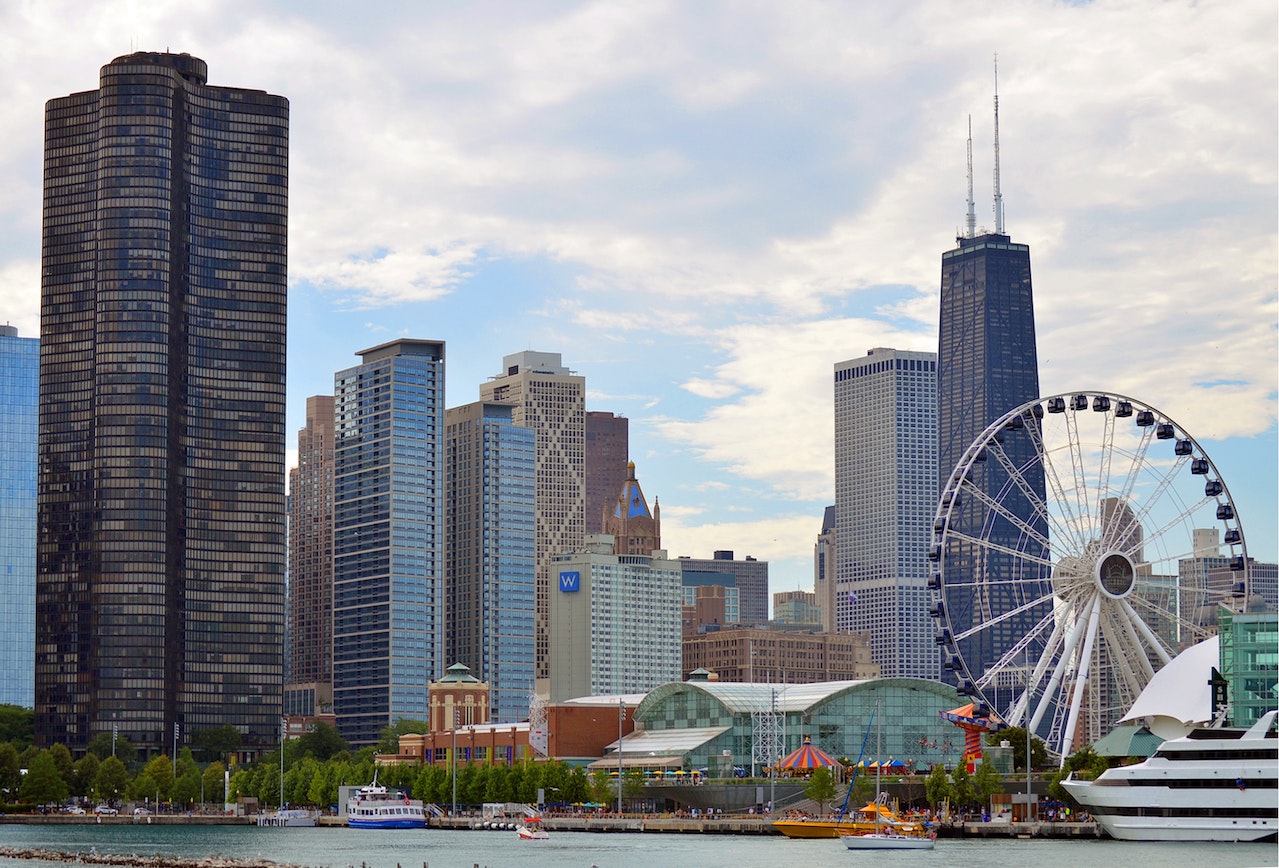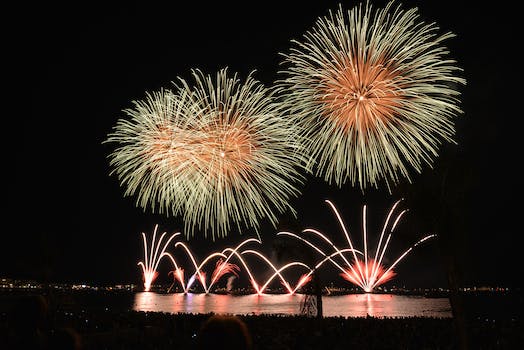The Chicago Cubs’ Opening Day Game at Wrigley Field
On April 4, 2014, the Chicago Cubs played their opening day game at Wrigley Field against the Philadelphia Phillies. The game was highly anticipated, as it marked the beginning of a new season and a new era for the Cubs. The team had undergone significant changes in the offseason, including the hiring of a new manager, Rick Renteria, and the signing of several new players.
Despite the excitement surrounding the game, the Cubs ultimately fell to the Phillies by a score of 7-2. The team struggled to get anything going offensively, managing just two runs on six hits. The Phillies, on the other hand, had a strong showing at the plate, with Ryan Howard and Marlon Byrd each hitting home runs.
One of the biggest storylines of the game was the performance of Cubs pitcher Jeff Samardzija. Samardzija had been the subject of trade rumors throughout the offseason, and many fans were curious to see how he would perform in what could potentially be his last season with the team. Unfortunately for Samardzija and the Cubs, he struggled in his opening day start, giving up five runs on eight hits in just over five innings of work.
Despite the disappointing result, there were still some positives to take away from the game for the Cubs. Newcomer Emilio Bonifacio had a strong debut, going 4-for-5 at the plate and scoring one of the team’s two runs. Starlin Castro also had a solid game, going 2-for-4 with an RBI.
Overall, while the Cubs may have lost their opening day game, there was still plenty of reason for optimism heading into the rest of the season. The team had made significant improvements in the offseason, and there were several promising young players on the roster. While it would take time for the team to fully come together and reach its potential, there was no doubt that the Cubs were headed in the right direction.
Looking back on the game now, it’s clear that it was just the beginning of what would be a long and challenging season for the Cubs. The team would go on to finish with a record of 73-89, good for last place in the National League Central division. However, despite the disappointing finish, there were still plenty of bright spots throughout the season, including the emergence of young players like Anthony Rizzo and Javier Baez.
In the years since that opening day game in 2014, the Cubs have undergone even more changes. The team has won a World Series championship, and many of the players who were on the roster back in 2014 have moved on to other teams. However, that game will always be remembered as the start of a new era for the Cubs, and a reminder of the excitement and optimism that comes with the beginning of a new baseball season.
The Chicago Blackhawks’ Playoff Run
In April 2014, the city of Chicago was buzzing with excitement as the Chicago Blackhawks began their playoff run. The Blackhawks, who had won the Stanley Cup in 2010 and 2013, were looking to make it three championships in four years.
The team had a strong regular season, finishing with a record of 46-21-15 and earning the third seed in the Western Conference. Led by stars like Jonathan Toews, Patrick Kane, and Duncan Keith, the Blackhawks were considered one of the favorites to win the Stanley Cup.
Their first-round matchup was against the St. Louis Blues, a division rival who had finished the regular season with a record of 52-23-7. The series was expected to be a tough one, and it lived up to the hype.
The Blackhawks won the first two games of the series at home, but the Blues bounced back with two wins of their own in St. Louis. The series then shifted back to Chicago for Game 5, which turned out to be a classic.
The game went into triple overtime, with both teams having numerous chances to win. Finally, at the 16:12 mark of the third overtime period, Blackhawks defenseman Brent Seabrook scored the game-winning goal to give Chicago a 3-2 victory.
The win gave the Blackhawks a 3-2 series lead, and they closed out the series with a 5-1 win in Game 6. The series victory was a huge relief for the Blackhawks, who had struggled in the first round of the playoffs in the previous two years.
In the second round, the Blackhawks faced the Minnesota Wild, who had upset the Colorado Avalanche in the first round. The Blackhawks were once again the favorites, but the Wild were a tough opponent.
The series started off well for the Blackhawks, as they won the first two games at home. However, the Wild bounced back with two wins of their own in Minnesota, setting up a pivotal Game 5 in Chicago.
The Blackhawks came out strong in Game 5, scoring three goals in the first period to take a commanding lead. They held on for a 2-1 win, and then closed out the series with a 2-1 victory in Game 6.
The win over the Wild sent the Blackhawks to the Western Conference Finals for the fourth time in six years. Their opponent would be the Los Angeles Kings, who had won the Stanley Cup in 2012 and 2014.
The series between the Blackhawks and Kings was one of the most exciting in recent memory. The two teams were evenly matched, and every game was a battle.
The Blackhawks won the first two games of the series at home, but the Kings bounced back with two wins of their own in Los Angeles. The series then shifted back to Chicago for Game 5, which turned out to be another classic.
The game went into double overtime, with both teams having numerous chances to win. Finally, at the 5:47 mark of the second overtime period, Blackhawks forward Michal Handzus scored the game-winning goal to give Chicago a 5-4 victory.
The win gave the Blackhawks a 3-2 series lead, and they closed out the series with a 5-3 win in Game 6. The victory sent the Blackhawks to the Stanley Cup Finals for the third time in five years.
In the Finals, the Blackhawks would face the New York Rangers, who had defeated the Montreal Canadiens in the Eastern Conference Finals. The series was another classic, with the Blackhawks winning in six games to capture their third Stanley Cup in six years.
The playoff run of the 2014 Chicago Blackhawks will go down as one of the most memorable in NHL history. Led by a talented group of players and a determined coach in Joel Quenneville, the Blackhawks overcame tough opponents and adversity to capture another championship for the city of Chicago.
The Chicago Marathon Registration Opens
In April 2014, the city of Chicago was buzzing with excitement as the registration for the Chicago Marathon opened. This annual event is one of the most popular marathons in the world, attracting runners from all over the globe. The marathon is known for its scenic route, which takes runners through some of the city’s most iconic landmarks, including Grant Park, the Magnificent Mile, and the Lakefront Trail.
The registration process for the Chicago Marathon is highly competitive, with thousands of runners vying for a spot in the race. In 2014, the registration process opened on April 1st and closed on April 22nd. During this time, runners had to submit their applications and pay the registration fee, which was $185 for U.S. residents and $210 for international runners.
The demand for the Chicago Marathon is so high that the organizers have to use a lottery system to select the runners who will participate in the race. This means that even if a runner submits their application and pays the registration fee, they are not guaranteed a spot in the race. Instead, their name is entered into a lottery, and if they are selected, they will receive an email notifying them of their acceptance.
The lottery system is designed to ensure that the race is fair and accessible to all runners, regardless of their ability level. It also helps to prevent overcrowding on the course, which can be dangerous for runners. In 2014, the lottery was held on April 29th, and the results were announced on May 1st.
For those who were lucky enough to secure a spot in the Chicago Marathon, the months leading up to the race were filled with training and preparation. The marathon is a grueling 26.2-mile race, and runners need to be in top physical condition to complete it. Many runners hire coaches or join running clubs to help them prepare for the race.
The Chicago Marathon is not just a race, but also a celebration of the city’s culture and community. The event attracts thousands of spectators, who line the streets to cheer on the runners and enjoy the festivities. There are live music performances, food vendors, and other activities throughout the day, making it a fun and exciting event for everyone involved.
In 2014, the Chicago Marathon took place on October 12th, and it was a huge success. More than 40,000 runners participated in the race, and the winner was Kenyan runner Eliud Kipchoge, who finished with a time of 2:04:11. The top female finisher was Ethiopian runner Mare Dibaba, who finished with a time of 2:25:37.
Overall, the 2014 Chicago Marathon was a memorable event that brought together runners and spectators from all over the world. It showcased the city’s beauty and culture, and it was a testament to the power of human endurance and determination. As the registration for the 2021 Chicago Marathon opens, runners and spectators alike can look back on the 2014 race as a reminder of the excitement and joy that this event brings to the city every year.
The Chicago Riverwalk Expansion Project Begins
In April 2014, the city of Chicago began a major expansion project on the Chicago Riverwalk. The project aimed to transform the riverfront into a vibrant public space that would attract tourists and locals alike. The expansion project was a long-awaited development that had been in the works for several years.
The Chicago Riverwalk is a 1.25-mile promenade that runs along the south bank of the Chicago River. It is a popular destination for tourists and locals, offering stunning views of the city skyline and access to a variety of restaurants, bars, and shops. However, the riverwalk had long been in need of an upgrade, as it was narrow and congested in some areas, and lacked amenities such as seating and public restrooms.
The expansion project aimed to address these issues by widening the riverwalk and adding new amenities such as seating, public restrooms, and recreational spaces. The project was divided into three phases, with each phase focusing on a different section of the riverwalk.
The first phase of the project, which began in April 2014, focused on the section of the riverwalk between State Street and Clark Street. This section was chosen for the first phase because it was the most congested and in need of immediate attention. The first phase of the project was completed in 2015, and included the addition of new seating areas, public restrooms, and recreational spaces such as a kayak launch and a fishing pier.
The second phase of the project, which began in 2016, focused on the section of the riverwalk between Clark Street and LaSalle Street. This section of the riverwalk was widened and new amenities such as a water plaza and a floating garden were added. The second phase of the project was completed in 2017.
The third and final phase of the project, which began in 2018, focused on the section of the riverwalk between LaSalle Street and Lake Street. This section of the riverwalk was widened and new amenities such as a jetty and a river theater were added. The third phase of the project was completed in 2019.
The expansion project was a major success, transforming the Chicago Riverwalk into a world-class public space that has become a major attraction for tourists and locals alike. The project has also had a significant economic impact on the city, with new businesses opening along the riverwalk and property values increasing in the surrounding areas.
The Chicago Riverwalk expansion project was a major undertaking that required significant planning and investment. However, the project has proven to be a major success, transforming the riverfront into a vibrant public space that has become a major attraction for tourists and locals alike. The project is a testament to the city’s commitment to creating world-class public spaces that enhance the quality of life for its residents and visitors.
The Chicago Architecture Biennial Announces Participants
In April 2014, the Chicago Architecture Biennial announced the participants for its inaugural event, which was set to take place in October of that year. The biennial was a new international exhibition of contemporary architecture, showcasing the work of architects, designers, and artists from around the world.
The event was organized by the Chicago Department of Cultural Affairs and Special Events, in partnership with the Graham Foundation for Advanced Studies in the Fine Arts. The biennial aimed to explore the role of architecture in shaping the world we live in, and to promote dialogue and exchange between architects, designers, and the public.
The list of participants for the biennial was impressive, featuring some of the most innovative and influential architects and designers of our time. Among the participants were David Adjaye, Tatiana Bilbao, Sou Fujimoto, and Bjarke Ingels, to name just a few.
David Adjaye is a British architect known for his innovative and socially engaged designs. His work includes the Smithsonian National Museum of African American History and Culture in Washington, D.C., and the Nobel Peace Center in Oslo, Norway.
Tatiana Bilbao is a Mexican architect who has gained international recognition for her sustainable and socially responsible designs. Her work includes the Ajijic House in Jalisco, Mexico, and the Culiacán Botanical Garden in Sinaloa, Mexico.
Sou Fujimoto is a Japanese architect known for his experimental and unconventional designs. His work includes the Serpentine Gallery Pavilion in London, England, and the House NA in Tokyo, Japan.
Bjarke Ingels is a Danish architect who has gained a reputation for his bold and visionary designs. His work includes the 8 House in Copenhagen, Denmark, and the Via 57 West in New York City.
The biennial also featured a number of other architects and designers from around the world, including Alejandro Aravena, Elizabeth Diller, and Jeanne Gang. The event included exhibitions, installations, and public programs, as well as a series of talks and discussions with the participating architects and designers.
The Chicago Architecture Biennial was a major event for the city of Chicago, and for the world of architecture and design. It provided a platform for architects and designers to showcase their work, and to engage with the public on issues related to architecture and the built environment.
The biennial also highlighted the importance of architecture in shaping our world, and the need for architects and designers to address the social, economic, and environmental challenges of our time. It demonstrated the power of architecture to inspire and transform, and to create a better future for all.
Overall, the Chicago Architecture Biennial was a resounding success, attracting visitors from around the world and generating a great deal of excitement and interest in the field of architecture and design. It was a testament to the power of collaboration and innovation, and to the importance of architecture in shaping our world.
Conclusion
In April 2014, Chicago experienced a surge in gun violence, with 36 people shot and six killed in a single weekend. The city’s police department responded by increasing patrols and implementing new strategies to combat the violence. Despite these efforts, the city continued to struggle with high levels of gun violence in the following years.
0




